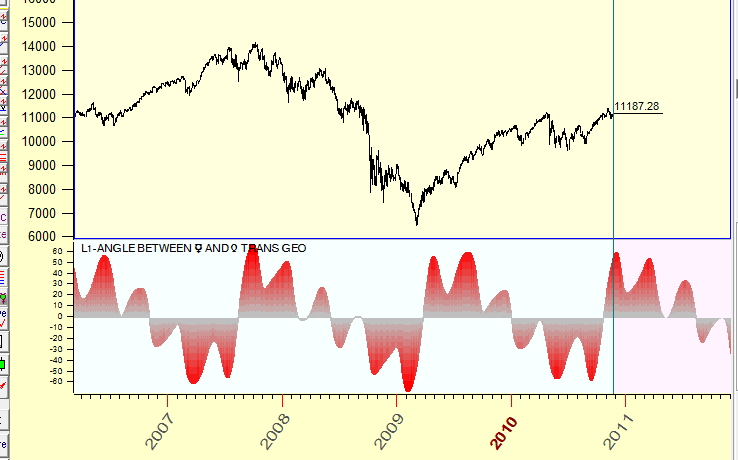
Equidistant lines based on inner planets - definite range time
When you create the planetary equidistant lines based on some combination of INNER planets (i.e. Mercury-Sun, Venus-Sun and Mercury-Venus equidistant lines), remember the specific qualities of these planets.
As an example, let's consider Mercury - Venus angle in this class. Mathematically speaking we can state that Mercury-Venus angle is a FINITE function, while all other planetary combinations represent INFINITE function.
See how the angle between Mercury and Venus is changing in time:

As you see this angle is changing in the range of -70 to +70 degrees. It means that we will never find the moment when this angle has the value of 120 degrees or any degree more than 70. It is so due to the peculiarities of Mercury - Venus movement in respect to each other. Therefore, for inner planets we use plus/minus the notation value notation to define the angles (it is similar to what we do for the declination).
Like for the declination where a negative value means South declination, the negative angle between Mercury and Venus (for example, let this angle be -33 degrees) means that Mercury is located behind Venus:
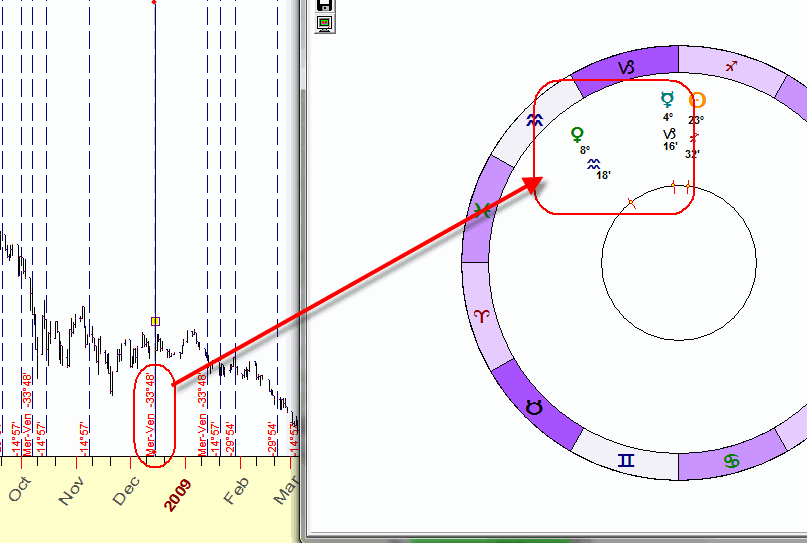
The positive value (+21 degrees) in this example means Mercury located in front of Venus:
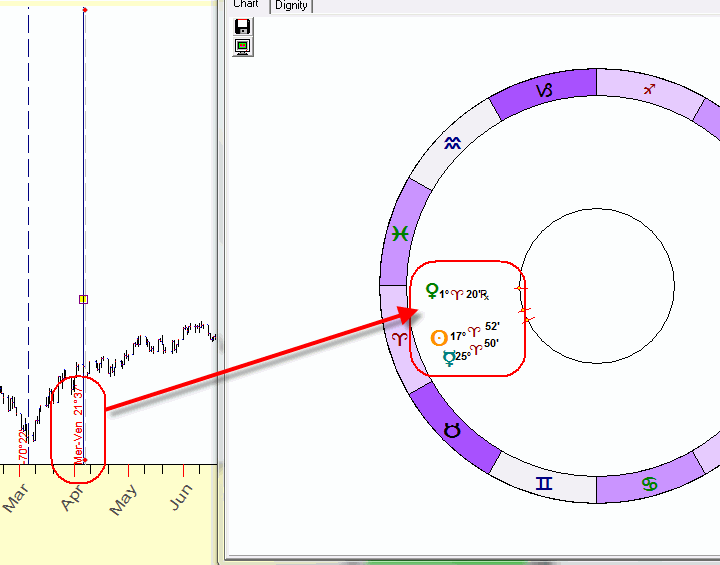
Accordingly if Mercury-Venus angle varies in the range -70..+70, the maximum possible step that can be used for Mercury-Venus planetary equidistant lines is 140 degrees, we can not use step 150, 240 or 360 degrees. This is a mathematical restriction for FINITE functions.
Just to show you how it works, let's consider Mercury-Venus planetary equidistant lines with the initial angle separation +15 degrees and the step=30 degrees:
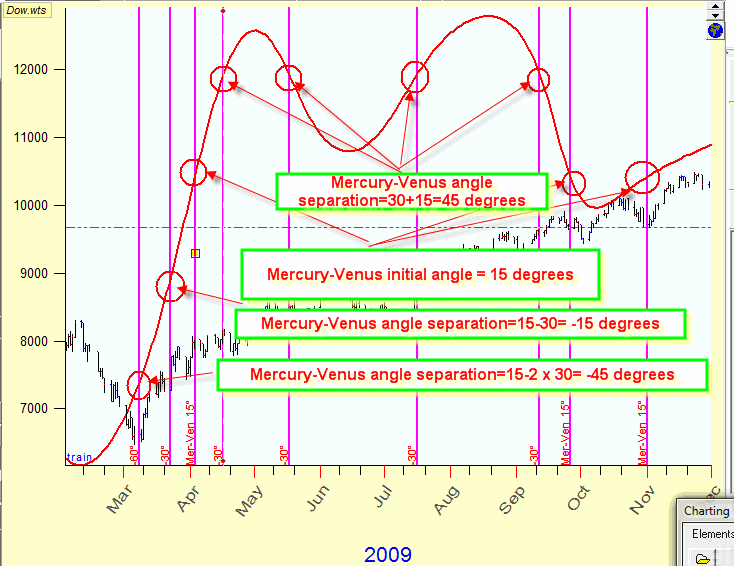
As you see, the last step that can be used here is 15-2 x 30 = -45 degrees (it is shown in the left corner). The next step angle 15-3 x 30 = -75 degrees can never be reached because the maximum angle separation between these two real planets is a little more than -70 degrees, though not -75 degrees.
All other planetary combinations have no such restrictions. We can use any initial angle and step there. For example this is diagram for Mercury-Jupiter angle separation:
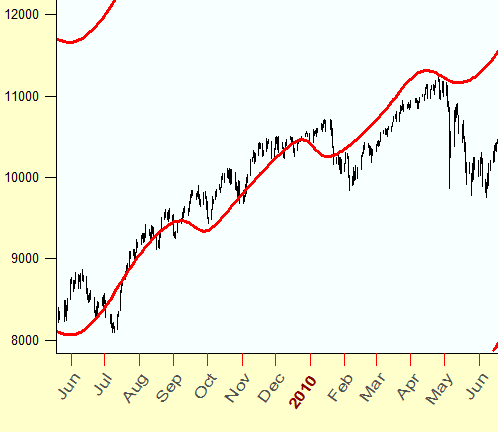
This is infinite function, so we can easily find the moment when this angle has 1,000 degrees increase:
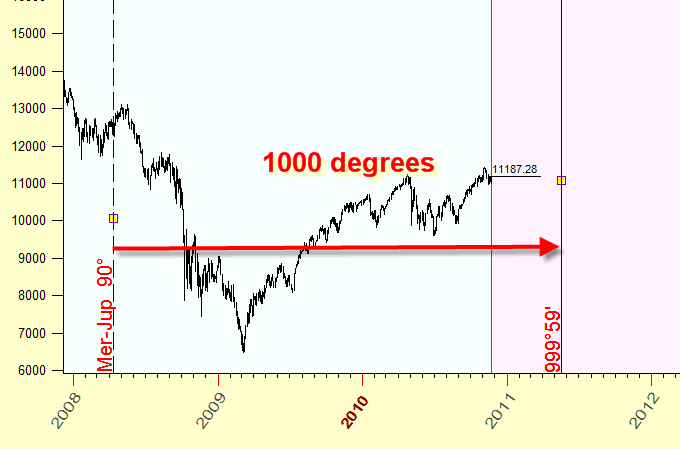
However, these numbers for two inner planets (any combination of Mercury, Venus, and the Sun) cannot be reached, they are restricted by some values.